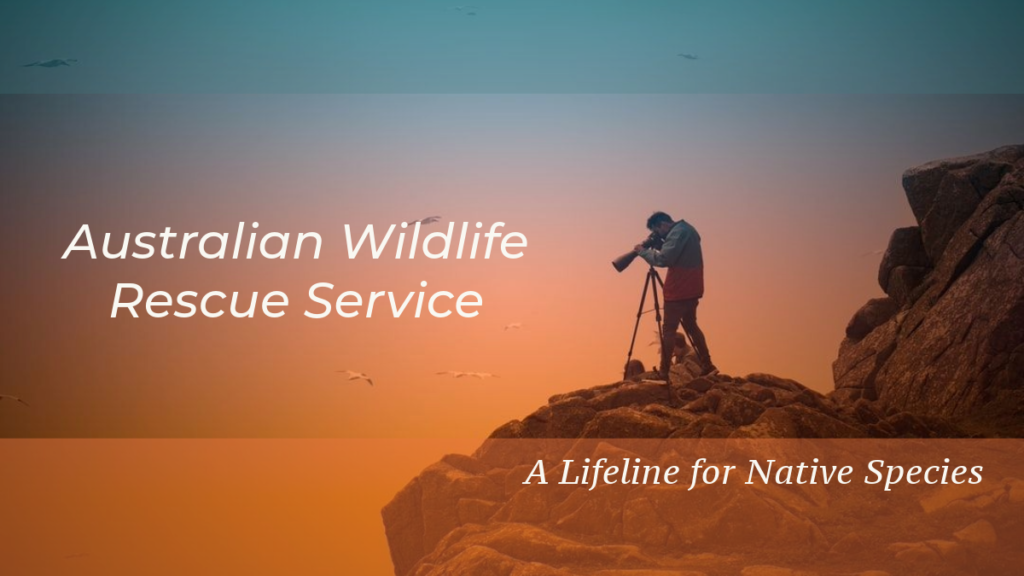Australia is home to some of the most unique and diverse wildlife in the world, including kangaroos, koalas, platypuses, and a myriad of bird and reptile species. Unfortunately, the delicate ecosystems that support these animals are increasingly threatened by human activities, natural disasters, and climate change. In this context, Australian wildlife rescue services have become vital in protecting and preserving the nation’s iconic fauna.
This article explores the critical role of wildlife rescue services in Australia, the challenges they face, and how adopting innovative tools like AI-powered platforms can improve their operations.
The Importance of Wildlife Rescue Services
- Preserving Biodiversity
Australia’s wildlife is integral to the health of its ecosystems. Wildlife rescue services help preserve this biodiversity by rehabilitating injured animals and reintroducing them into their natural habitats. - Responding to Emergencies
Natural disasters such as bushfires, floods, and droughts can devastate animal populations. Wildlife rescue services act as first responders, saving animals from dangerous situations and providing the care needed to ensure their survival. - Supporting Endangered Species
Several Australian species, such as the Tasmanian devil and the northern hairy-nosed wombat, are critically endangered. Rescue services play a vital role in conservation efforts by addressing threats like habitat loss, diseases, and human-wildlife conflicts. - Raising Public Awareness
Wildlife rescue organizations educate the public about protecting native species, reducing human impact on habitats, and promoting coexistence with wildlife.
Key Activities of Wildlife Rescue Services
- Rescue Operations
Rescue teams respond to calls from the public about injured, orphaned, or displaced animals. Common rescues include kangaroos hit by vehicles, koalas injured by dog attacks, and birds caught in fishing nets. - Rehabilitation
After rescue, animals are provided with medical care, food, and shelter. Specialized rehabilitation centers are equipped to handle diverse species, ensuring they are healthy and strong enough to return to the wild. - Release Programs
The ultimate goal of wildlife rescue is to release rehabilitated animals back into their natural environment. This process often involves tracking and monitoring to ensure the animal’s successful reintegration. - Collaboration with Authorities and Communities
Wildlife rescue services work closely with government bodies, veterinarians, and local communities to create a supportive network for animal care and conservation.
Challenges Faced by Wildlife Rescue Services
- Limited Funding
Most wildlife rescue services rely on donations and grants to operate. Securing consistent funding for staff, equipment, and medical supplies is a constant struggle. - Increasing Demand
With the rise in natural disasters and human encroachment on habitats, the demand for wildlife rescue services continues to grow, stretching resources thin. - Lack of Awareness and Support
Many people are unaware of how to assist injured animals or the importance of supporting rescue organizations. This lack of awareness limits community involvement. - Technological Gaps
Wildlife rescue services often operate with outdated tools and manual processes, which can hinder efficiency in managing rescue operations and data collection.
Opportunities for Improvement
- Community Engagement
Raising public awareness through social media campaigns, school programs, and community events can encourage donations and volunteer participation. - Leveraging Technology
Innovative tools, such as drone technology and AI, can enhance rescue efforts by identifying animals in distress and tracking their movements. - Expanding Volunteer Networks
Recruiting and training more volunteers can help bridge the gap between rising demand and limited resources. - Partnerships with Businesses and Governments
Collaborating with private and public sectors can provide additional funding and resources for wildlife rescue services.
How Websitebuilder.ai Can Help Wildlife Rescue Services
Having a strong online presence is crucial for wildlife rescue services to raise awareness, attract donations, and recruit volunteers. Websitebuilder.ai offers a simple and effective way to create a professional website that supports these goals.
- Donation Integration: The platform allows organizations to set up secure online donation systems, making it easier for supporters to contribute.
- Volunteer Recruitment Features: Wildlife rescue services can use Websitebuilder.ai to showcase volunteer opportunities and streamline application processes.
- Customizable Templates: With user-friendly templates, rescue services can highlight their mission, share success stories, and create informative blogs about wildlife conservation.
- AI-Driven Efficiency: AI tools help automate tasks like event scheduling, donor management, and content updates, freeing up time for rescue teams to focus on their core mission.
By using Websitebuilder.ai, Australian wildlife rescue services can amplify their impact and connect with a broader audience to support their life-saving work.
Conclusion
Australian wildlife rescue services are the unsung heroes safeguarding the nation’s unique biodiversity. Despite facing numerous challenges, these organizations play a critical role in protecting vulnerable species, responding to emergencies, and raising public awareness about wildlife conservation.
By embracing technology and strengthening community engagement, wildlife rescue services can enhance their operations and ensure the survival of Australia’s iconic fauna. Platforms like Websitebuilder.ai can empower these organizations by providing an accessible and efficient way to build a strong online presence, recruit volunteers, and secure vital funding.
